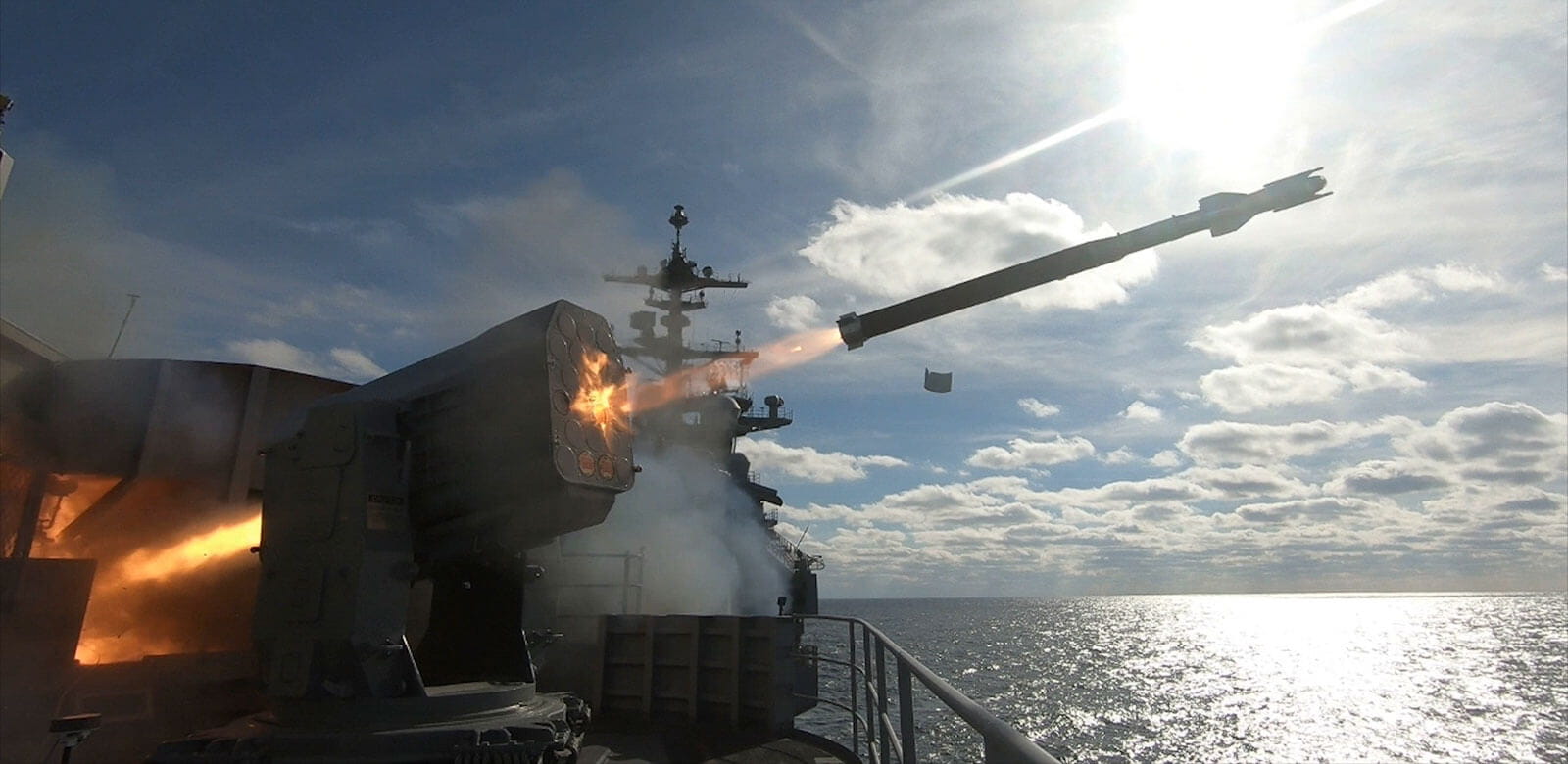The State Department has made a determination approving a possible Foreign Military Sale to the Government of Japan of Rolling Airframe Missiles (RAM) Block 2B Tactical Missiles and related equipment for an estimated cost of $74.6 million. The Government of Japan has requested to buy up to sixty-three (63) Rolling Airframe Missiles (RAM) Block 2B Tactical Missiles, RIM-116E. Also included are RAM Guided Missile Round Pack Tri-Pack shipping and storage containers; training equipment; manuals; technical documentation; technical and logistic support services; support for establishment of an Intermediate Level Maintenance Facility (ILMF); and other related elements of logistics and program support. The principal contractor will be Raytheon Missiles and Defense Company, Tucson, AZ. There are no known offset agreements proposed in connection with this potential sale.
The RIM-116 Rolling Airframe Missile (RAM) is a small, lightweight, infrared homing surface-to-air missile in use by the German, Japanese, Greek, Turkish, South Korean, Saudi Arabian, Egyptian, Mexican, UAE, and United States navies. It was originally intended and used primarily as a point-defense weapon against anti-ship missiles. As its name indicates, RAM rolls as it flies. The missile must roll during flight because the RF tracking system uses a two-antenna interferometer that can measure phase interference of the electromagnetic wave in one plane only. The rolling interferometer permits the antennas to look at all planes of incoming energy. In addition, because the missile rolls, only one pair of steering canards is required. The Rolling Airframe Missiles, together with the Mk 49 Guided Missile Launching System (GMLS) and support equipment, make up the RAM Mk 31 Guided Missile Weapon System (GMWS).
The Block 2 (RIM-116C) is an upgraded version of the RAM missile aimed at more effectively countering more maneuverable anti-ship missiles through a four-axis independent control actuator system, increased rocket motor capability, an improved passive radio frequency seeker and upgraded components of the infrared seeker, and advanced kinematics. On 8 May 2007, the U.S. Navy awarded Raytheon Missile Systems a $105 million development contract. Development was expected to be completed by December 2010. LRIP began in 2012. 51 missiles were initially ordered. On 22 October 2012, the RAM Block 2 completed its third guided test vehicle flight, firing two missiles in a salvo and directly hitting the target, to verify the system’s command and control capabilities, kinematic performance, guidance system, and airframe capabilities.
The original Block 0 design was based upon the infra-red seeker of the Stinger missile, and the warhead, rocket motor and fuse from the Sidewinder missile. The Block 0 configuration uses Radio Frequency (RF) for midcourse guidance and transitions to Infrared (IR) guidance for terminal engagement. The Block 1A incorporates the added capability of autonomous IR-all-the-way guidance, thus countering advanced anti-ship cruise missiles that do not employ onboard radar seekers. The Block 2 missile provides kinematic and guidance improvements for countering maneuvering and low probability of intercept threats to regain battlespace. The newly developed RAM Block 2B missile incorporates a new infrared seeker head and a missile-to-missile-link between RAM Block 2B salvo shootings. Together with its evolved radar frequency receiver software, this enables the missile to effectively counter complex raid scenarios of incoming anti-ship missiles and new targets of the latest generation.











